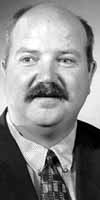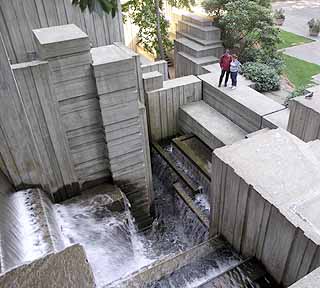
Surveys
DJC.COM
April 27, 2006
Program catalogs our fading historic landscapes
AHBL

Dietz
|
The National Park Service in 2000 established the Historic American Landscapes Survey (HALS) to document landscapes that serve as tangible evidence of our nation's heritage and development.
In general, HALS achieves this purpose through written descriptions, measured drawings and photographs. HALS does not limit development, no land is purchased, and property rights are unaffected. If the physical character of the region cannot be protected through other means, HALS ensures a record and images of the landscape in its historic context will endure.
HALS is a companion program to the Historic American Building Survey and the Historic American Engineering Record, which have been administered by the Park Service and funded by Congress over many decades.

Photo by Liz Austin
Freeway Park, designed by Lawrence Halprin and Angela Danadjieva, is an iconic and historic landscape in Seattle. Though not a HALS site, the HALS program could provide a framework that would influence the park's revitalization.
|
In addition to chronicling significant and increasingly at-risk landscapes for future generations, HALS provides a wide range of practical uses today. For example:
Since its inception, HALS has established an impressive track record with one full-time staff person and a very limited budget drawn from other National Park Service accounts. Unfortunately, nationally significant landscapes are disappearing or are being significantly altered at a rate that far exceeds the capabilities of the existing program to respond. Without additional resources, HALS cannot provide technical or financial assistance to local groups, American Society of Landscape Architects state chapters, and historical associations interested in completing HALS projects in or near their communities.
The American Society of Landscape Architects has requested $1.2 million to support HALS in the fiscal year 2007 Interior Appropriations bill. This would support core staff, including landscape architects, historians and GIS specialists, as well as allow the program to provide technical assistance and small seed grants to local communities. With this support, citizens nationwide can initiate HALS projects and help document significant landscapes.
Duane Dietz is a registered landscape architect at AHBL.
Other Stories:
- Arsenic-eating ferns may clean up Puget Sound soils
- Is this as green as Seattle gets?
- Putting a forest floor up on the roof at the zoo
- Veterans' cemeteries: an inspiration of place
- Creating an urban forest in Anchorage
- Using GIS as a tool to protect Puget Sound
- Site constrained? That's opportunity knocking
Copyright ©2009 Seattle Daily Journal and DJC.COM.
Comments? Questions? Contact us.